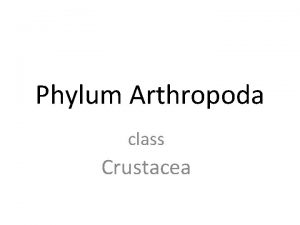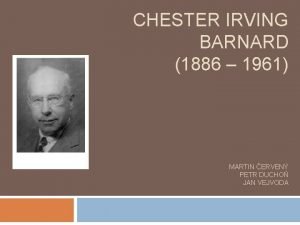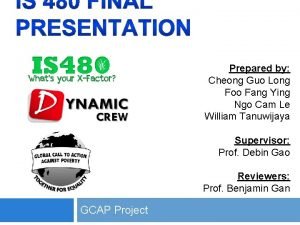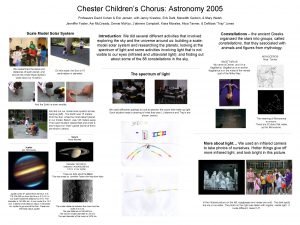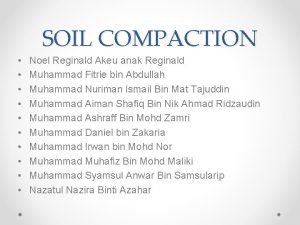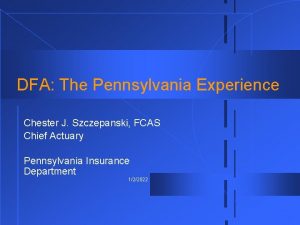CHESTER PENNSYLVANIA RISK STUDY Reginald Harris Senior ToxicologistRegional




















- Slides: 20

CHESTER, PENNSYLVANIA RISK STUDY Reginald Harris, Senior Toxicologist/Regional Environmental Justice Coordinator EPA Region III

Chester, PA Risk Study


Chester, Pennsylvania Risk Study • Chester, Pennsylvania Risk Study: The Chester Risk Assessment Project was part of an initiative by the United States Environmental Protection Agency (USEPA) Region III and agencies of the Commonwealth of Pennsylvania to study environmental risks, health, and regulatory issues in the Chester, Pennsylvania area. This "cumulative risk study" utilized exposure data for all environmental media and exposure pathways, and attempted to characterize these exposures and to assess risk by qualitative and/or quantitative means.

The City of Chester is located approximately 15 miles southwest of the City of Philadelphia along the Delaware River. At the time of the study there were aproximately 42, 000 persons residing in Chester, which has an area of 4. 8 square miles. Surrounding communities also examined in development of this report include Eddystone, Trainer, Marcus Hook, and Linwood. Major surface transportation routes transect Chester including Interstate 95, and US Route 13, which parallels Interstate 95 to the east. US Route 322 bisects Chester from northwest to southeast.

A key element in the project scope called for environmental risks to be quantitated wherever possible, and supplemented with qualitative information. Chemical data were gathered from existing sources. The scope of this project did not include collection of new data specifically designed for a Chester risk assessment. Instead the workgroup performed an examination of available data which yielded the following observations:

n. The data had been collected for different programs and different agencies. These data were not originally designed to support a quantitative risk assessment of the Chester area. n. The databases were of varying quality, and certain chemicals and media had not been tested. However, even with the limited data, many data sets were available to be used to generate estimated risks. n. Modeling of air data from point sources was performed prior to the air risk assessment. Therefore, point source air risks are based on projected data rather than data actually collected in the field. The lead (Pb) data, area sources of volatile organic compound (VOC) emissions, Resource Conservation and Recovery Act (RCRA) site information, and Toxic Release Inventory (TRI) data did not involve the types of environmental data conducive to quantitative risk assessment.

The findings of the report were: n. Blood lead in Chester children was unacceptably high (over 60% of children's blood samples are above the Center for Disease Control (CDC) recommended maximum level of 10 ug/dl). n. Both cancer and non-cancer risks from the pollution sources at locations in the city of Chester exceeded levels which EPA believes are acceptable. Air emissions from facilities in and around Chester provide a large component of the cancer and noncancer risk to the citizens of Chester. n. The health risk from eating contaminated fish from streams in Chester and the Delaware River is unacceptably high. n. Drinking water in Chester is typical of supplies in other cities through out the country. Slight long term (20 year) risks may be expected due to the residuals of water treatment processes.

In response to findings, the USEPA Region III recommended that: §the lead paint education and abatement program in the City of Chester should be aggressively enhanced, §sources of air emissions which impact the areas of the city with unacceptably high risk should be targeted for compliance inspections and any necessary enforcement action, §a voluntary emission reduction program should be instituted to obtain additional emissions reductions from facilities which provide the most emissions in the areas of highest risk, §enhanced public education programs regarding the reasons behind the existing state mandated fishing ban should be implemented.

Children's Blood Lead Statistics 1989 -1993 Chester, Pennsylvania

Ratio of Cancer Incidence Rates for Selected Populations in Pennsylvania. 1987 -1991 Lung, Trachea, Bronchus Ratio 100 80 60 Chester City Delaware County 40 Philadelphia County Montgomery County 20 Chester County 0 -20 Males Females

Ratio of Cancer Incidence Rates for Selected Populations in Pennsylvania, 1987 -1991 Leukemias 30 20 10 0 Chester City Delaware County -10 Philadelphia County -20 Montgomery County -30 Chester County -40 -50 -60 Males Females

Ratio of Cancer Incidence Rates for Selected Populations in Pennsylvania, 1987 -1991 Prostate 30 25 20 Chester City Delaware County 15 Philadelphia County Montgomery County 10 Chester County 5 0 Males

Ratio of Cancer Incidence Rates for Selected Populations in Pennsylvania, 1987 -1991 All Cancers Combined Ratio 30 20 Chester City Delaware County 10 Philadelphia County Montgomery County Chester County 0 -10 Males Females

Ratio of Cancer Incidence Rates for Selected Populations in Pennsylvania, 1987 -1991 Breast Ratio 15 10 5 Chester City Delaware County 0 Philadelphia County Montgomery County -5 Chester County -10 -15 Females

Age-adjusted Cancer Incidence Rates for Pennsylvania by Sex 1989 -1993

Age-adjusted Cancer Mortality Rates for Pennsylvania by Sex 1989 -1993

Pennsylvania Mortality Ratios Expressed as Percentages Based on 1992 Mortality Rates

CHESTER LEGAL CASE TIMELINE • -1995: PADEP issues permit to Soil Remediation Services, Inc. to treat up to 960 tons a day of petroleum contaminated soil at a very high temperature. • - May 1996: Case filed in federal district court by Concerned Citizens of Chester. • -11/5/96: District Court dismisses counts which sought private enforcement of discriminatory effects regulations. Plaintiffs appeal. • -9/25/97: Oral argument before Third Circuit.

CHESTER LEGAL TIMELINE (CONT’D) • 12/30/97: Third Circuit reverses district court–finds there is a private cause of action for disparate impact regulations. Appeal to Supreme Court. • 6/8/98: Supreme Court grants cert. • 8/17/98: Supreme Court vacates opinion of Third Circuit; case remanded to Third Circuit with instructions to dismiss.
 Digital design and computer architecture: arm edition
Digital design and computer architecture: arm edition Meritbase
Meritbase Phylum arthropoda class crustacea
Phylum arthropoda class crustacea Reginald agunwah
Reginald agunwah Reggie stephey today
Reggie stephey today Reginald liger
Reginald liger Who was reginald punnett
Who was reginald punnett Credit risk market risk operational risk
Credit risk market risk operational risk Abyasa chester
Abyasa chester Chester agricultural center
Chester agricultural center Chester f carlson center rit
Chester f carlson center rit Modern approaches of management
Modern approaches of management Chester barnard
Chester barnard Daniel chester
Daniel chester Conlan school
Conlan school Abyasa pro
Abyasa pro Tongue twisters funny
Tongue twisters funny Chester barnard informal organizations
Chester barnard informal organizations Ben chester cheong
Ben chester cheong Chester children's chorus
Chester children's chorus Diowa
Diowa


